IT monitoring in the cloud has become a key element in ensuring the stability, performance, and security of digital infrastructures in cloud environments. As companies migrate more applications and services to the cloud, having an effective monitoring strategy is essential to anticipate failures, optimize resources, and maintain continuous operations.
Although many organizations implement monitoring tools, they do not always maximize their full potential. To ensure that your cloud IT monitoring strategy is effective, we have prepared a checklist with the essential elements that must be included in your cloud infrastructure.
Real-time Monitoring of Infrastructure and Services
The first step in an effective strategy is to implement a tool that allows real-time monitoring of the status of servers, applications, databases, and networks in the cloud. This helps detect performance issues before they affect users and ensures stable operations.
- Supervision of virtual servers, containers, and cloud services.
- Monitoring of CPU, memory, storage, and network traffic usage.
- Identification of bottlenecks in applications and databases.
Recommended solution: Cloud infrastructure monitoring with advanced tools such as Nagios, Elastic, and Checkmk.
Implementation of Smart Alerts and Automated Responses
Alerts are essential in an IT monitoring strategy. However, if not configured properly, they can generate too many irrelevant notifications. It is crucial to implement a smart alert system that prioritizes critical events and automates responses to reduce the IT team’s operational workload.
- Definition of thresholds and rules for critical alerts.
- Automation of responses to recurring incidents.
- Integration with notification platforms such as email, SMS, or messaging systems.
Recommended solution: Advanced alert configuration with Nagios and Checkmk for more precise monitoring.
Log and Trace Monitoring for In-Depth Analysis
Logs and traces enable a deep analysis of events occurring in an IT infrastructure. Capturing and centralizing this data facilitates anomaly detection, problem resolution, and optimization of cloud application performance.
- Centralization of logs in a single repository for easier searching and analysis.
- Identification of error patterns and early detection of problems.
- Correlation of events at multiple levels (applications, networks, servers).
Recommended solution: Real-time log monitoring with Elastic for advanced log analysis.
User Experience (UX) Monitoring
A cloud IT monitoring strategy should not only focus on infrastructure but also on the end-user experience. If a service has high latency or slow response times, it can negatively impact customer perception and result in financial losses.
- Measurement of web and mobile application load times.
- Monitoring of API and microservice performance.
- Simulation of user interactions to detect issues before they occur.
Recommended solution: Use of observability and APM tools to enhance the user experience.
Integration with DevOps and CI/CD Environments
Agile methodologies and DevOps require continuous monitoring to detect problems at every stage of application development and deployment in the cloud. Integrating monitoring tools with CI/CD pipelines helps prevent failures before they impact production.
- Monitoring of development, testing, and production environments.
- Integration with tools such as Kubernetes, Docker, and Jenkins.
- Generation of stability reports before each deployment.
Recommended solution: Implementation of observability solutions for DevOps.
Security and Compliance in the Cloud
Security is a critical aspect of cloud infrastructure monitoring. It is essential to monitor access to critical systems, detect suspicious behavior, and ensure compliance with security regulations.
- Logging of access and changes to key configurations.
- Implementation of real-time security audits.
- Detection of unauthorized access attempts or malicious activity.
Recommended solution: Use of monitoring tools with security analysis capabilities, such as Elastic and Checkmk.
Having a well-structured cloud IT monitoring strategy allows companies to maintain service stability, reduce response time to incidents, and optimize application performance. By following this checklist and using advanced tools such as Nagios, Elastic, and Checkmk, businesses can ensure effective and proactive supervision of cloud environments.
If you are looking to optimize your cloud IT monitoring strategy, check out more details in Cloud Infrastructure Monitoring and improve your digital infrastructure resilience.





